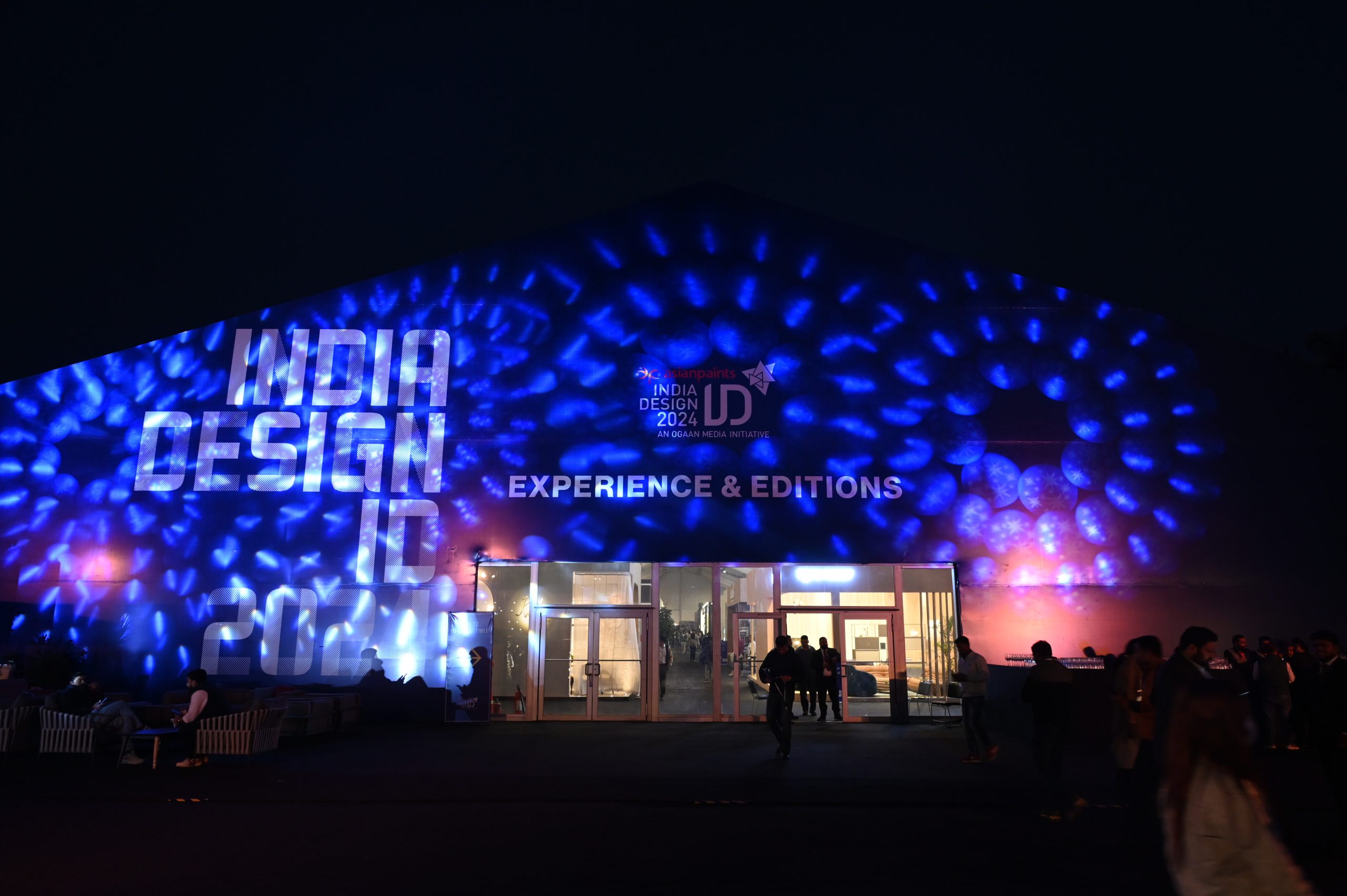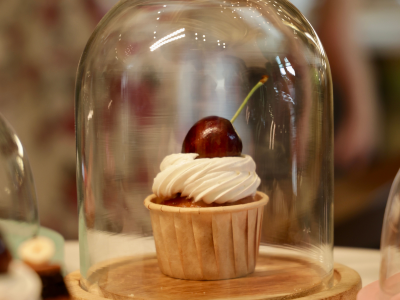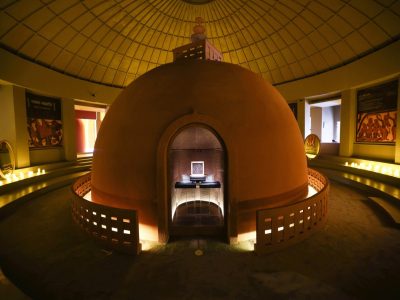In the bustling halls of India Design Week 2024, where innovative home décor brands converge at the NSIC Grounds, one figure stands out: the statuesque Ameya Thapar, dressed in pristine white. A graduate of the esteemed National Institute of Design, Ahmedabad, Ameya’s presence here isn’t just symbolic—it’s a testament to her institution’s legacy of cutting-edge design.
Alongside a select group of students from various NID batches, Ameya Thapar has launched Para Kashta, a venture with a singular mission: to resurrect the lost art of Bijnor’s wall murals. Under the banner of Para Kashta, the “Adi Shakti” collection emerges, embodying the divine union of Adi and Shakti—Shiva and Parvati—through meticulously crafted works in teak wood, silk fabric, and vibrant pigments. Some of these creations tower as high as 16 feet, adorned with ancient shlokas and symbols.
Para Kashta’s team of 11 talented artisans are crafting more than just art; they’re pushing the boundaries of design experimentation.
Notable pieces like “Chamunda” and “Mahakali” underscore the dynamism symbolised by the “Ta” of the Para Kashta insignia, offering a fresh perspective on traditional forms.
This year’s India Design Week, a brainchild of Ogaan’s Kavita Bhartia and her reclusive daughter Aashti, marks a significant milestone in its 12-year journey. Brand director Preeti Singh shares that while last year’s focus was on AI in architecture, this year, the event’s floor was left open to explore the rich tapestry of luxury décor, reflecting the diversity and intrigue of the field.
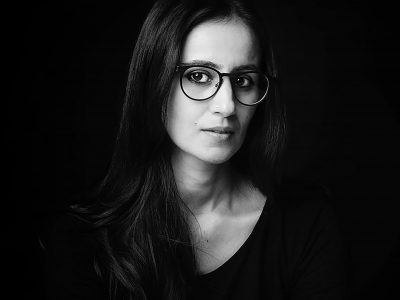
This edition of India Design Week, boasting over 130 exhibitors, is making waves not only in Delhi but also in Mumbai—a first for the event. As the legacy of Para Kashta and Ameya Thapar continues to evolve, their presence at India Design Week is a poignant reminder of the innovation and dynamism shaping India’s design landscape.
Hand blown glass with its unpredictability, is something like life, you never know what turn it takes, and therein lies its robustness. IDS, or the Innovative Design Studio is one such example, where ingenious lights hand blown, from the Czech Republic known for its mastery of this craft, lit up the display. Any kind of customisation is possible, and if you look closely at the textures of the glass, it has an inbuilt decorative element.
Baand, Baja, Baarat
With nearly three decades of experience, Vandana Mohan’s Wedding Design Company has redefined the art of creating memorable events. Her illustrious clientele includes the Ambani family, for whom she orchestrated the splendour of Akash and Shloka’s wedding, as well as the nuptials of Bollywood luminaries like Deepika Padukone, Ranveer Singh, Parineeti Chopra, and Raghav Chadha. Business magnates, including Sajjan and Sangeeta Jindal of Jindal Steel and Power, have entrusted her with their family weddings.
Invited by Asian Paints, Vandana shared her insights on wedding trends and the symbolic significance of colours. She emphasised the importance of understanding spatial dynamics, textures, and the desired ambiance for an event.
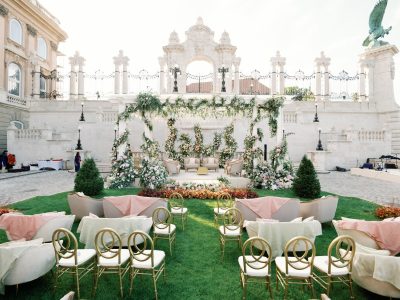
“In Indian weddings, red is a traditional favourite for its character and vibrancy,” she remarked, noting that contrasting hues can add a personalised touch. Vandana advises caution in colour selection, especially considering the timing of the event and its lighting conditions.
“Lighting makes or breaks a space, how high will the sun be? you can’t control nature, unlike when you have an event indoors, and you are working with artificial lighting,” she confesses.
She says that evening events can be darker, and feels fashion, movies, and theatre — everything influences wedding décor.
“Sindoori red is a metaphor of celebrations, tone-on-tone is magical, pastels are pleasing, but the tone in which you apply these is what makes a difference to the overall look.
“Stripes, checks and dots are perfect for an afternoon lunch,” she smiles. “I always add sunset with its ombre glow, to make it look festive, you know, I can play with many hues without it looking jarring, as long as the aesthetics are subtle,” she adds.
Many celebrities Vandana has worked with prefer ivory and white, as it speaks for itself. Even if you see palaces, whether it is the Sheesh Mahal or Rajasthan’s imposing architecture, this hue remains dominant.
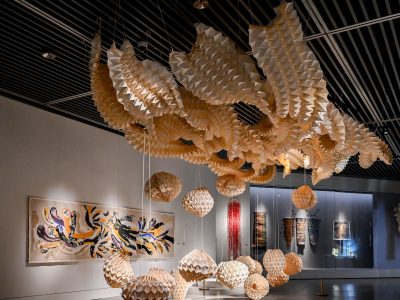
“When I am travelling, I am armed with my camera capturing what has withstood the test of time,” she adds.
Her creativity extends to unconventional themes, such as jungle prints and indigo accents, as well as the meticulous execution of maximalist designs. Vandana’s expertise extends to international inspirations, as evidenced by her ability to capture the essence of Italian frescos in a Roman wedding.
Vandana also encourages clients to explore bolder palettes like bronze, pewter, and metallics. She stays abreast of emerging trends, incorporating Moroccan and Istanbul motifs, as well as Asian Paints’ Colour of the Year, Terracotta, into her designs. Her diverse inspirations, drawn from various sources like books and music, fuel her innovative approach to wedding curation.
In summary, Vandana Mohan’s creative prowess and keen eye for detail have made her a stalwart in the world of wedding design. Her ability to infuse traditional elements with contemporary flair, combined with her knack for understanding clients’ unique preferences, ensures that each event she crafts is a masterpiece of elegance and distinction.
Women ‘jugglers’
Wearing multiple hats as a mother, wife, and entrepreneur can be a challenging balancing act, often leading women to take a backseat. However, four bold women managing successful businesses emphasised the importance of effective time management. They navigate through the hoops of juggling various roles.
Anjali Mody, a creative director at Josmo and granddaughter of former Attorney General of India, Soli Sorabjee, along with Farah Sham of Essajee Atelier, Ekta Parekh of reD Architects, and Farah Ahmed of FADD Studio, shared their experiences at the ID Symposium. They highlighted the challenges of juggling various roles, with Farah emphasising the unpredictability that arises when children fall ill, disrupting even the best-laid plans.
Farah says, “I try and start my day early, as all four of us women speakers here, on this panel have two kids to manage. But when your kids fall ill, those well-planned timings and what you set out to do or accomplish in a day, really doesn’t happen.”

The concept of work-life balance, often debated, is a matter of delegation according to the panelists. For Ekta, incorporating work into personal life by providing a space where children can play while parents work fosters dedication. Sarah, having worked on notable projects like the Ambani and Singhania homes and Taj Downtown, Dubai, emphasised the importance of introspection and alignment with a life partner to navigate professional challenges.

Beyond the challenges lies the reward of being recognised by one’s children, as Anjali experienced when her children ‘Googled’ her achievements. She reflected on the importance of mental presence in meetings and the value of children’s pride in their parent’s achievements.
The women on this panel share a collective journey of perseverance and dedication, proving that navigating multiple roles is not merely a challenge but also a source of profound fulfillment.
Deciphering design
Nikhil and Shantnu Mehra of S and N have forged a lasting legacy, captivating millennial imaginations while upholding a profound respect for the past.
“When I began menswear in 2013, I drew inspiration from my mother’s effortless management of her sari,” reflects Nikhil Mehra. He sees India’s changing landscape as a beautiful fusion of femininity and masculinity, exemplified by the country’s rich spiritual tradition and pronounced masculinity.
Their design philosophy is grounded in “civilizational continuity”, rejecting a simplistic Western-centric lens. Nikhil believes that we must respect and re-imagine the past while embracing the constant evolution of design as a reflection or reaction to society.

In a recent talk at the ID Symposium on “Deciphering Design”, Nikhil joined forces with HH Yaduveer Krishnadatta Chamaraja Wadiyar (YKC), the scion of the Mysore royal family. Yaduveer, who graduated from the University of Massachusetts, Amherst, with a double major in Economics and English, is actively involved in preserving and repurposing his family’s rich heritage. He emphasises the importance of a sustainable design approach, mirroring the environmentally-friendly ethos of the Deccan’s rich cultural history.
For both designers, the past holds invaluable lessons in harmonising design with nature, a principle illustrated by the enduring legacy of the Mysore palace. Whether in engineering, materials, or geometry, the palace stands as a testament to a bygone era’s mastery in design. This respect for tradition and dedication to eco-consciousness forms the backbone of S and N’s design ethos, offering a thoughtful blend of modernity and heritage.

